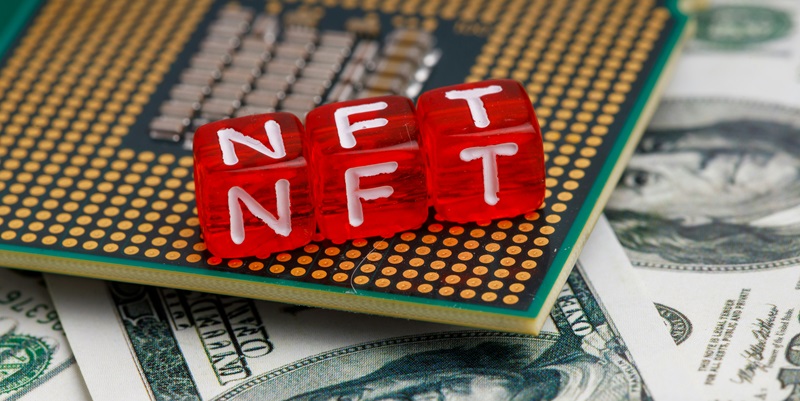The rapidly evolving landscape of Non-Fungible Tokens (NFTs) within cryptocurrency ecosystems is a testament to the transformative power of blockchain technology. Shifting dynamics, novel applications, and emerging trends highlight the increasing relevance of NFTs in the crypto world. This change is prominently observable as various blockchain platforms adapt and thrive amid the burgeoning NFT market. Initially, one would not have associated Bitcoin with NFTs due to its traditional functionality not being suited for decentralized applications (dApps) and smart contracts. However, Bitcoin has recently become a notable player, showcasing surprising adaptability and broadening its appeal by carving out a niche. Total sales volume of NFTs on the Bitcoin network has surpassed an astonishing $4 billion, highlighting Bitcoin’s enduring popularity.
The Ascendancy of NFTs in Blockchain Platforms
Meanwhile, the Ronin blockchain revolutionizes how NFTs intersect with the gaming industry, setting a paradigm shift in how digital assets hold value. Platforms such as Axie Infinity demonstrate that NFTs can transcend speculative hype, providing tangible value through gameplay. This example illustrates a model where in-game assets turn into real-world utilities, paving the way for practical applications beyond mere collectibles. The central theme in exploring these developments is the boundless quest for innovation within the cryptocurrency NFT ecosystems. Some platforms center their strategies around market excitement, hoping to create value through fervent trading activities. In contrast, others aim to embed NFTs into diverse applications to bolster their functionality, such as digital art, virtual real estate, and music.
A significant aspect of this innovation revolves around embracing interoperability among different blockchain networks. Interoperability allows seamless token transfers and interactions across various systems, enhancing user experience and ensuring broader adoption. This cross-compatibility is crucial for the future of NFTs, as it breaks down isolation barriers between separate blockchain ecosystems, fostering a unified digital asset environment. Despite the great enthusiasm, environmental concerns pose significant challenges for NFT transactions. The high energy consumption involved in validating these transactions has spurred intense debate, encouraging projects to seek pathways to mitigate their environmental impact.
Sustainable Solutions and Technological Advancements
Key trends indicate a shift toward enhancing scalability and transaction speed through layer-2 technologies. These solutions help manage higher transaction volumes at reduced costs while also addressing the environmental drawbacks associated with energy-intensive mining practices. Layer-2 technologies comprise secondary frameworks or protocols built on top of existing blockchain systems, aiming to improve overall system performance. These advancements are essential for ensuring the sustainable growth and scalability of NFTs, paving the way for wider mainstream adoption. In line with this, several blockchain networks are also exploring more energy-efficient consensus mechanisms like Proof of Stake (PoS) over the traditional Proof of Work (PoW).
However, regulatory issues continue to pose hurdles, especially in terms of ownership rights and intellectual property. Establishing clear and enforceable rights over digital assets remains a contentious topic, complicating efforts toward standardized solutions. This ambiguity inevitably slows down mainstream acceptance as potential investors and users seek assurance in legal frameworks. On the other hand, the advantages of NFTs cannot be overlooked. They offer global accessibility, enabling content creators worldwide to monetize their digital assets seamlessly. NFTs have the potential to represent a diverse array of assets, opening up varied investment opportunities from digital art and music to real estate.
Unfolding Opportunities and Potential Risks
The Ronin blockchain is transforming the relationship between NFTs and the gaming industry, marking a significant evolution in the value of digital assets. Axie Infinity exemplifies how NFTs can go beyond speculative trading to offer genuine value through actual gameplay. This paradigm demonstrates how in-game assets can become valuable in real life, opening doors for practical uses beyond just collectibles. The driving force behind these advancements is the relentless pursuit of innovation within the cryptocurrency and NFT sectors. Some platforms focus on generating market buzz to create value through active trading, while others integrate NFTs into a variety of applications like digital art, virtual real estate, and music to enhance their functionality.
A critical element of this innovation is interoperability among various blockchain networks, allowing seamless token transfers and interactions. This enhances user experience and promotes wider adoption by eliminating silos between distinct blockchain ecosystems. Despite the excitement around NFTs, environmental concerns about the high energy consumption involved in validating transactions pose challenges. This has sparked debate and urged projects to find ways to lessen their environmental impact, ensuring a more sustainable future for NFTs.

